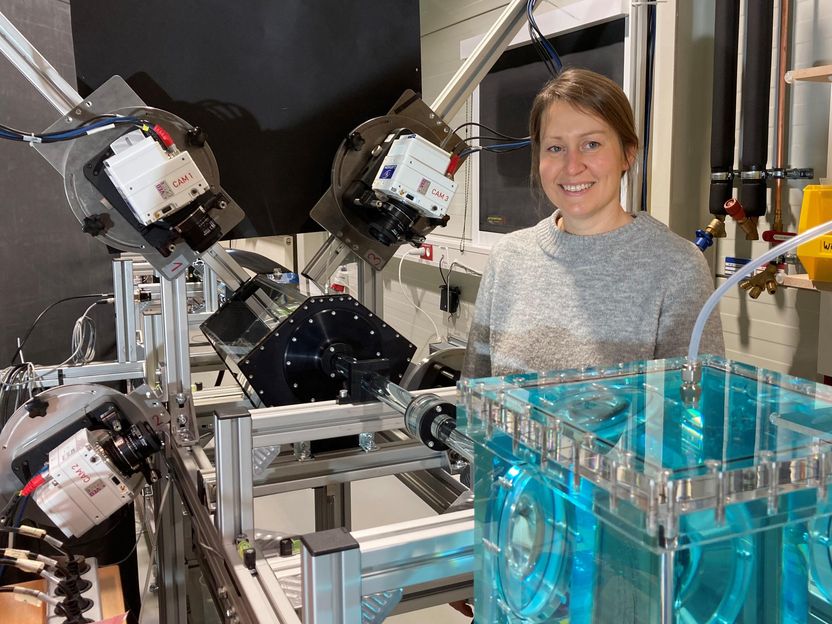When Fuel Sloshes Dangerously
Coffee sloshing over the rim of a cup: annoying, but bearable. Sloshing fuel in rockets or tankers: more dangerous
Advertisement
Kerstin Avila from the University of Bremen conducts research on this topic and on turbulence - with success, as two outstanding publications now show.

With the help of four high-speed cameras, Dr. Kerstin Avila gets to the bottom of the movement of particles in a pipe flow.
Kerstin Avila / Universität Bremen
Sloshing coffee is known to many people as an annoying everyday problem that one can and must live with. In engineering, however, such dynamics can have fatal effects. "Sloshing fuel endangers the flight stability of rockets, for example. Or the transport of liquefied gas in tankers becomes dangerous if the sloshing aligns with the ship's motion," says Dr. Kerstin Avila, a process engineer within the Faculty of Production Engineering at the University of Bremen and at the Leibniz Institute for Material Engineering (IWT). Together with other European researchers, she has presented completely new research results that have now been published in the journals Nature Communications and Physical Review Letters.
Resonance of Sloshing Wave Motion Reliably Predicted
Predictions regarding the resonance of sloshing fluids with other motions were previously only possible to a limited extent. In cooperation with theorists at ETH Zurich, Kerstin Avila and her experimental fluid mechanics team have now succeeded in reliably predicting resonances of sloshing wave motions for the first time. To do this, they broke completely new ground in research by combining abstract theories, machine learning, and experiments. "We have shown that all the information needed for the prediction is contained in very few measurements that our team took," says Kerstin Avila.
Together with three researchers from Austria, Poland, and France, Kerstin Avila showed in another study that the distribution of turbulence is subject to very simple laws. "These laws do not apply specifically to fluids, but also describe in a first approximation, for example, the spread of a virus through the population or a forest fire," Kerstin Avila states and mentions another interesting aspect. "At its core, the theory of 'direct percolation’ is behind these propagation dynamics, which is a theory used in many scientific fields to explain phenomena."
Milestone: Resilient Data Instead of just a Projection
Until now, the predicted numbers, which in the case of virus spread, for example, are ultimately based only on projected data, have never actually been observed exactly in nature, or been viewed in the frame of a spatially extended experiment. However, this is exactly what the team and the process engineer from Bremen have now succeeded in doing with a flow experiment after years of research. "This is a real milestone for the confirmation of the theory and for the description of the turbulence transition," the scientist is pleased to say.
Original publication
Cenedese, M., Axås, J., Bäuerlein, B. et al.; "Data-driven modeling and prediction of non-linearizable dynamics via spectral submanifolds"; Nat Commun; 13, 872 (2022).
L. Klotz, G. Lemoult, K. Avila, and B. Hof; "Phase Transition to Turbulence in Spatially Extended Shear flows"; Physical Review Letters; 2022.





























































